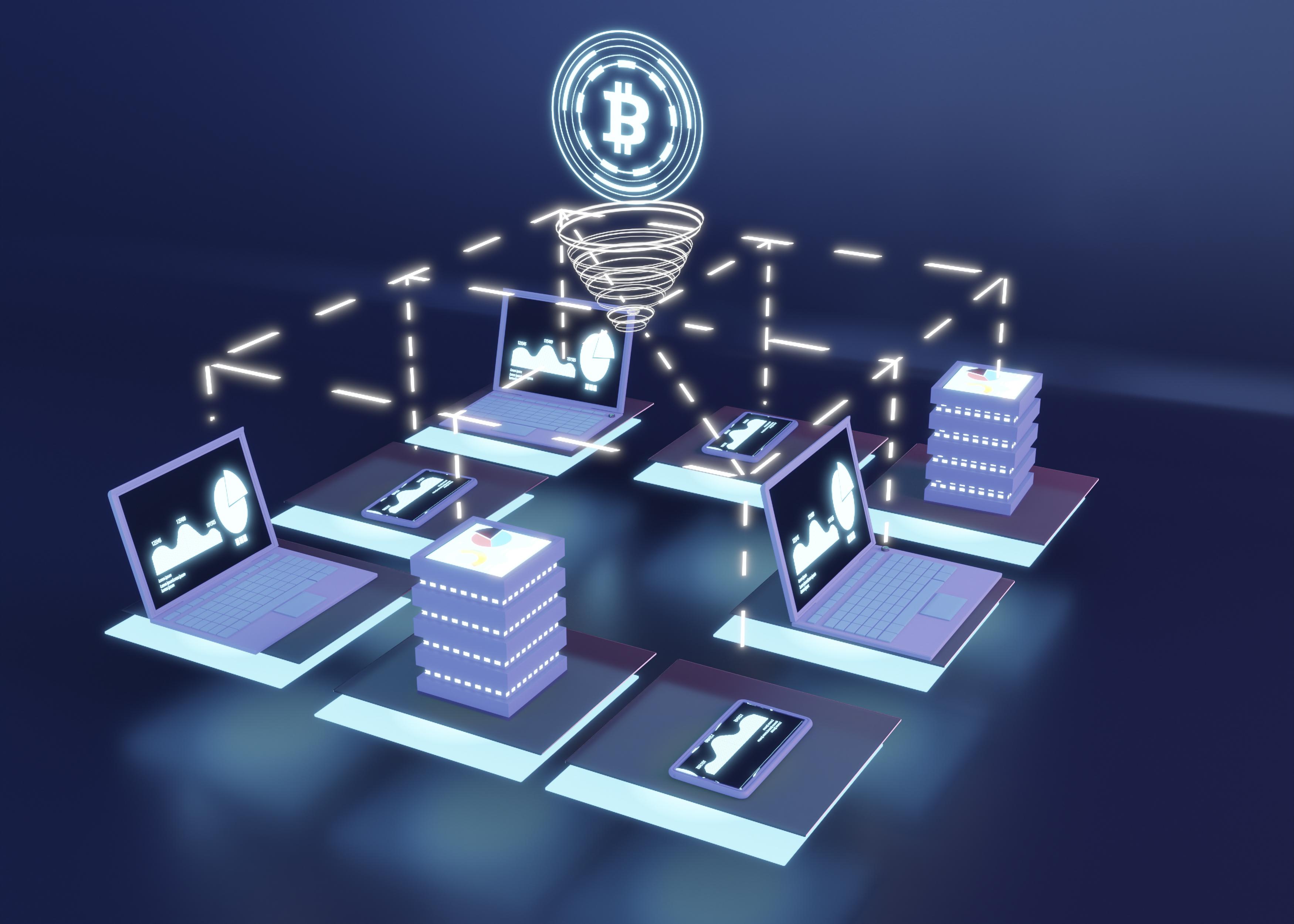Why is Blockchain Important and Why Does it Matters

The rapid progress of Blockchain technology is showing no signs of slowing down. In the past few decades, many things that seemed impossible have turned out to be false, such as high transaction fees, double spending, net fraud, retrieving lost data, etc. But, now all this can be avoided with the help of Blockchain Technology.
What is Blockchain Technology?
Blockchain started in 1991 as a way to store and secure digital data. Blockchain is an open ledger that several parties can access at once. One of its primary benefits is that the recorded information is hard to change without an agreement from all parties involved. IBM explained that each new record becomes a block with a unique, identifying hash. Linking the blocks into a chain of records forms a blockchain. Bitcoin cryptocurrency uses blockchain technology.
Blockchain helps in the verification and traceability of multistep transactions needing verification and traceability. It can provide secure transactions, reduce compliance costs, and speed up data transfer processing. Blockchain technology can help contract management and audit the origin of a product. It also can be used in voting platforms and managing titles and deeds.
Source : simplilearn.com
Note: The data is recorded in chronological order. Also, once the data is recorded, it cannot be changed.
What Are the Benefits of Blockchain Technology?
Here’s a list of key benefits you can expect to achieve when adopting Blockchain technology into your business:
- It is an immutable public digital ledger, which means when a transaction is recorded, it cannot be modified
- Due to the encryption feature, Blockchain is always secure
- The transactions are done instantly and transparently, as the ledger is updated automatically
- As it is a decentralized system, no intermediary fee is required
- The authenticity of a transaction is verified and confirmed by participants
Building Trust in Government
A Pew Research Center study published last May stated that American trust in government is near an all-time low. Only about one-quarter of Americans say they can trust the government in Washington to do what is right “just about always” (2%) or “most of the time” (22%). Only 18 percent of Americans say they can trust the government to do what is right most of the time.
Booz Allen Hamilton consulting firm wrote that the government could benefit from blockchain-based applications because it offers transparency through decentralization, allowing participating stakeholders to see and verify data. In addition, blockchain can enable independent verification of governmental claims. The firm wrote that Sweden, Estonia, and Georgia are experimenting with blockchain-based land registries, which could help quickly resolve or prevent property disputes.
Blockchain Security
One of the negatives of digital transformation has been the growth in personal data theft. Government databases are a target of cyber hackers. Database hacks have exposed names, Social Security numbers, birthdates, addresses, and driver’s license numbers of millions of Americans, such as the 2017 Equifax database breach. Booz Allen Hamilton wrote that blockchain data structures harden network security by reducing single-point-of-failure risk, making a database breach difficult.
The Department of Homeland Security is researching blockchain approaches to data security, such as managing online identity and internet access. McKinsey said the technology could store hash values of citizen documents on the blockchain, allowing governments to provide a verifiable electronic version of these documents when needed.
Increasing Government Accountability
In specific applications, blockchain could reduce government redundancy, streamline processes, decrease audit burden, increase security, and ensure data integrity. One process ripe for streamlining is GSA’s FASTLane process, which manages incoming proposals from vendors. Booz Allen Hamilton wrote it currently takes 40 days to process incoming submissions. However, GSA hopes that a blockchain solution will help process them in 10 days.
Reducing Government Corruption
While blockchain won’t prevent crime, the World Economic Forum (WEF) wrote there are five use cases to address weaknesses in government systems.
- Public Procurement / Government Contracting
WEF wrote that government contracting is the largest area of government spending with the greatest potential for corruption worldwide. A blockchain-based process can facilitate third-party oversight of transactions and provide greater objectivity and uniformity through automated contracts. There also would be more transparency and accountability of transactions and participants. However, its implementation could be hindered by how it’s deployed. WEF wrote that the easier it is to access and use the blockchain platform, the more vulnerable it is to abuse. Further, if offline transactions continue outside of the blockchain platform, its anti-corruption potential will be limited. - Land Title Registries
As mentioned earlier, blockchain is a way for some countries to increase efficiency in land title registries. WEF wrote that Honduras and India are working on using blockchain to expand property rights and enhance transparency in a process known to have corrupt practices. Blockchain-based land registries could provide a secure, decentralized, publicly verifiable, and immutable record system where people could prove their land rights. A limitation would be that countries without land registries would have to build and digitize the information before blockchain could be used. - Electronic Voting
Governments are considering blockchain-based voting platforms due to concerns about election security, voter registration integrity, poll accessibility, and voter turnout. Blockchain’s information security qualities could help address election tampering and increase poll accessibility. WEF said a limitation would be blockchain’s vulnerability to cyberattacks and other security issues. - Beneficial Corporate Ownership Registries
According to WEF, secretly operated companies present avenues for money laundering, influence peddling, and steering government investments. Blockchain can develop central registries to help track conflicts of interest and criminal activity. It also could provide transparency and disclosure. However, there are several limitations as most countries don’t require companies to maintain beneficial ownership information themselves. Also, a blockchain-based registry would require buy-in from politicians, lawyers, banks, and big business, which may be a heavy lift in some locations. - Grant Disbursements
Because of the millions of dollars granted to various institutions, the opaque donation process is ripe for inefficiency and corruption. Blockchain could reduce the number of actors and managers, could streamline the process, and improve verification. WEF said a limitation would be among the less technologically savvy who might be excluded from grant disbursement processes. In addition, it would not address how recipients spend grant money.
How Will Blockchain Disrupt Industries?
Several industries like Unilever, Walmart, Visa, etc. use blockchain technology and have gained benefits in transparency, security, and traceability. Considering the benefits blockchain offers, it will revolutionize and redefine many sectors.
Here are the top 5 prominent industries that will be disrupted by blockchain technology in the near future:
- Banking
- Cyber Security
- Supply Chain Management
- Healthcare
- Government
1. Banking
Before Blockchain
Banking has transfer fees, which can be both expensive and time-consuming for people. Also, sending money overseas becomes even more difficult due to the exchange rate and other hidden costs.
After Blockchain
Blockchain eliminates the need for a middleman. Blockchain is disrupting the banking system by providing a peer-to-peer payment system with the highest security and low fees.
- Blockchain technology provides instant and borderless payments across the globe
- Cryptocurrencies (like Ethereum, bitcoin) remove the requirement for a third party to perform transactions
- Blockchain records all the transactions in a public ledger which is globally accessible by bitcoin users
Let’s consider an example of ABRA
- Abra is a financial cryptocurrency application which helps in performing peer-to-peer money transfers
- With this application, cryptocurrency users can save, send and receive their digital money on their electronic devices
2. Cyber Security
Before Blockchain
Earlier, cyberattacks were a significant threat to the public. Several organizations were developing an effective solution to secure the data against unauthorized access and tampering.
After Blockchain
- Blockchain quickly identifies malicious attack due to the peer-to-peer connections where data cannot be tampered with
- Every single piece of data stored on the blockchain network is verified and encrypted using a cryptographic algorithm
- By eliminating the centralized system, blockchain provides a transparent and secure way of recording transactions (without disclosing your private information to anyone)
For example, a software security company called Guardtime offers blockchain-based products and services.
Rather than following the centralized system, the company utilizes blockchain technology and distributes data to its nodes.
3. Supply Chain Management
Before Blockchain
Due to the lack of transparency, supply chain management often had its challenges like service redundancy, lack of coordination between various departments, and lack of reliability.
After Blockchain
Tracking of a product can be done with blockchain technology, by facilitating traceability across the entire Supply chain.
Blockchain gives the facility to verify and audit transactions by multiple supply chain partners involved in the supply chain management system.
- Blockchain records transaction (history, timestamp, date, etc.) of a product in a decentralized distributed ledger
- Each transaction is recorded into a block
- With blockchain, anyone can verify the authenticity or status of a product being delivered
Let’s consider an example of the Pacific Tuna project.
Here, blockchain supply chain management provides a step-by-step verification process to track tuna fish. The process results in preventing illegal fishing.
4. Healthcare
Before Blockchain
In the healthcare system, patients can connect to other hospitals and collect their medical data immediately. Apart from the delay, there are high data corruption chances since the information is stored in a physical memory system.
After Blockchain
- Blockchain removes a central authority, which results in instant access to data
- Here, each block is linked to another block and distributed across the computer node. This becomes difficult for a hacker to corrupt the data
For example, United Healthcare is an American healthcare company that has enhanced its privacy, security, and medical records’ interoperability using Blockchain.
5. Government
Before Blockchain
Rigged votes is an illegal activity that occurs during most traditional voting systems. Also, citizens who want to vote to wait a little longer in a queue and cast their votes to a local authority, which is a very time-consuming process.
After Blockchain
- Voters are allowed to vote without the need of disclosing their identity in public
- The votes are counted with high accuracy by the officials knowing that each ID can be attributed to just one vote
- As soon the vote is added to the public ledger, the information can never be erased
Consider an example of MiVote
- MiVote is a token-based blockchain platform that is similar to a digital ballot box
- Using MiVote, through a smartphone, voters can cast their votes, where the records are stored in the blockchain securely
Moving forward, let’s understand the fundamentals of Blockchain.
Fundamentals of Blockchain
1. Public Distributed Ledgers
A blockchain is a decentralized public distributed ledger that is used to record transactions across many computers
A distributed ledger is a database that is shared among the users of the blockchain network
The transactions are accessed and verified by users associated with the bitcoin network, thereby making it less prone to cyberattack
2. Encryption
Blockchain eliminates unauthorized access by using the cryptographic algorithm (SHA256) to ensure the blocks are kept secure
Each user in the blockchain has their key
3. Proof of Work
Proof of work (PoW) is a method to validate transactions in a blockchain network by solving a complex mathematical puzzle called mining.
Note: Users trying to solve the puzzle are called miners.
4. Mining
In Blockchain, when miners use their resources (time, money, electricity, etc.) to validate a new transaction and record them on the public ledger, they are given a reward.
Note: As a reward, the miner gets 12.5 BTC (bitcoins)
Conclusion
Blockchain technology is only going to grow in the fields of business, finance, law, medicine, and real estate. Whether you’re an experienced Blockchain developer, or you’re aspiring to break into this exciting industry, enrolling in our Blockchain Certification Training program will help individuals with all levels of experience to learn Blockchain developer techniques and strategies.
Do you have any questions for us? Please feel free to leave them in the comments section of this article; our experts will get back to you as soon as possible.
Source : simplilearn.com



